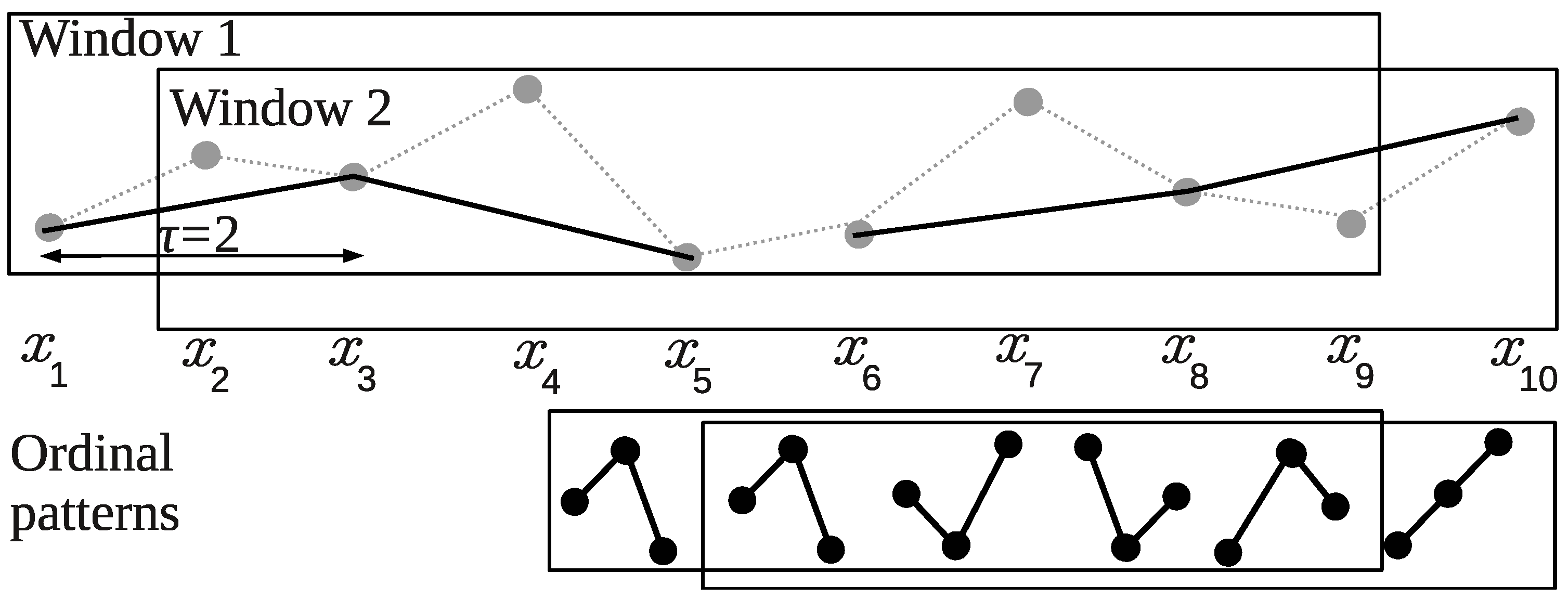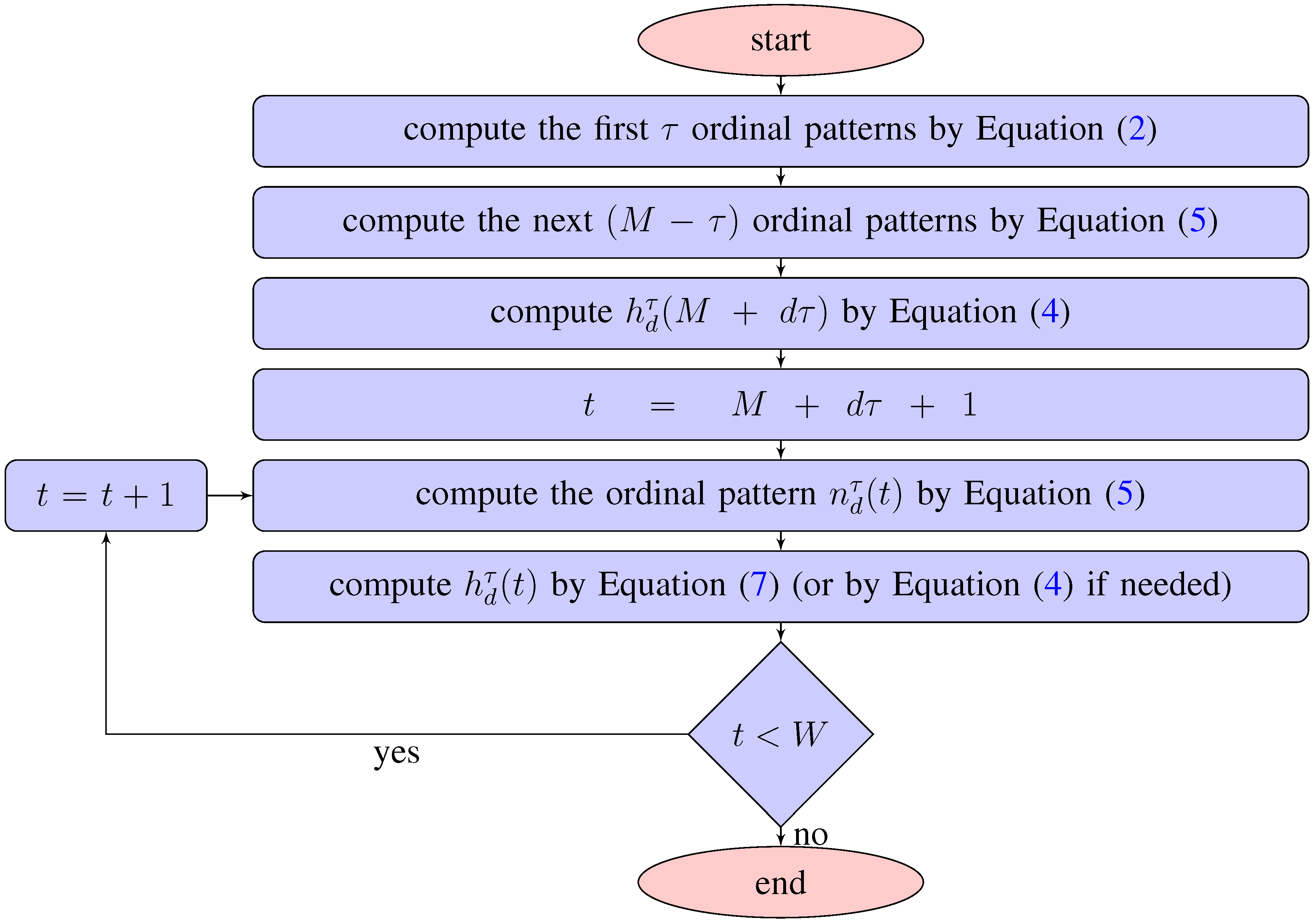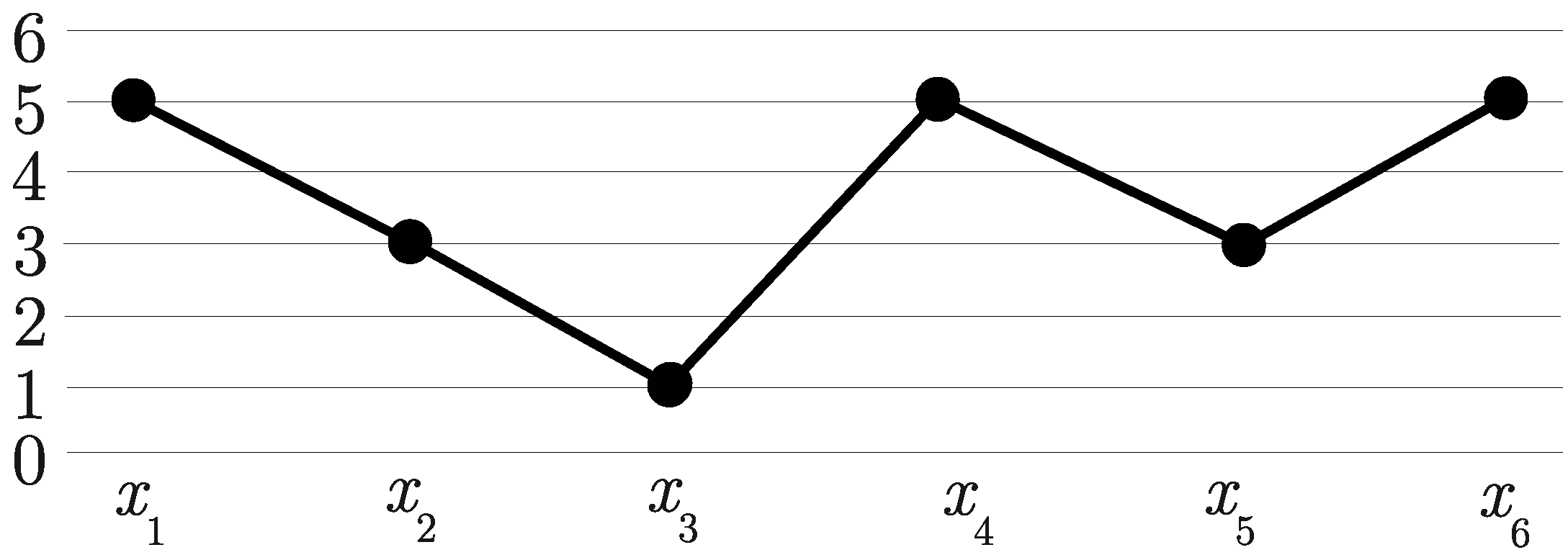1.1. Motivation
Measuring the complexity of a system by observed time series is an important problem in different fields of research. One faces the problem, for instance, of distinguishing between different brain states on the base of EEG data. The complexity of a dynamical system can be measured by the well-motivated Kolmogorov-Sinai (KS) entropy [
1], by the Lyapunov exponent, or by the correlation dimension [
2], but it is often not easy to estimate these and similar quantities from finite real-world data.
In order to quantify complexity on the base of real-world data, Bandt and Pompe have introduced permutation entropy [
3]. It is based on the distributions of ordinal patterns, which describe order relations between the values of a time series. On the one hand, permutation entropy is strongly related to KS entropy. It coincides with KS entropy for piecewise strictly monotone interval maps [
4] and is not less than KS entropy for many dynamical systems [
5,
6,
7] (see also [
8,
9] for some new results in this direction and [
10] for the discussion of two approaches to the permutation entropy with respect to KS entropy). On the other hand, permutation entropy is estimated by empirical permutation entropy, which is conceptually simple and algorithmically fast [
3,
11]. Empirical permutation entropy also provides robustness with respect to noise [
3,
12]. An important practical aspect of empirical permutation entropy is that one can compare by it complexities of different time series of a fixed length in a well-interpretable, standardized and simple way.
Justified theoretically and simple conceptually, empirical permutation entropy and different ordinal-patterns-based characteristics have been applied in various fields for analyzing real-world data: for detecting and visualizing EEG changes related to epileptic seizures (e.g., [
13,
14,
15,
16]), for distinguishing brain states related to anesthesia [
17,
18], for discriminating sleep stages in EEG data [
19], for analyzing and classifying heart rate variability data [
20,
21,
22,
23], and for financial, physical and statistical time series analysis (see [
10,
12] for a review of applications).
Motivated by the good properties and many applications of empirical permutation entropy, we propose in this paper an efficient method of computing it and ordinal patterns faster than in [
11], which allows for processing very large data sets in real-time. An efficient computation of ordinal patterns provides a fast calculation of not only empirical permutation entropy, but of many ordinal-patterns-based characteristics, such as, for example, the ordinal distributions itself [
24] and derived measures [
25], or transcripts, introduced in [
26]. The concept behind an efficient method is to use precomputed tables of successive values instead of computing ordinal patterns and the empirical permutation entropy in each time point. It is possible to precompute such successive values, because ordinal patterns “overlap” and, in fact, have some common information. Since successive values of the empirical permutation entropy are computed for successive overlapping time-windows, the possible “successive” entropies can also be precomputed.
Figure 1.
The empirical permutation entropy reflects changes of the epileptic EEG data.
Figure 1.
The empirical permutation entropy reflects changes of the epileptic EEG data.
To motivate the method, let us give an example of processing epileptic EEG data by the empirical permutation entropy (data from The European Epilepsy Database [
27]).
Figure 1 illustrates how the empirical permutation entropy (bottom plot) reflects the epileptic seizure (marked in red and with a “head”) in one-channel EEG data (upper plot). The processing of the depicted 20 min of EEG data, recorded at a sampling rate of 256 Hz, takes about 1 second in MATLAB R2012b.
In
Section 2 we recall some notions from ordinal patterns analysis and consider how to compute ordinal patterns (by the method introduced in [
11]) and how to compute the empirical permutation entropy from the distributions of ordinal patterns. More efficient methods for computing ordinal patterns and the empirical permutation entropy are introduced in
Section 3 and
Section 4, correspondingly. In
Section 5 we adapt the method to time series with a high frequency of occurrence of equal values. It is reasonable to take into account these equalities for data digitized with a low resolution, for example, for heart rate variability data as they are considered in [
23]. Finally, we present the comparison between two known methods of computing the empirical permutation entropy and the proposed method in
Section 6.


















































